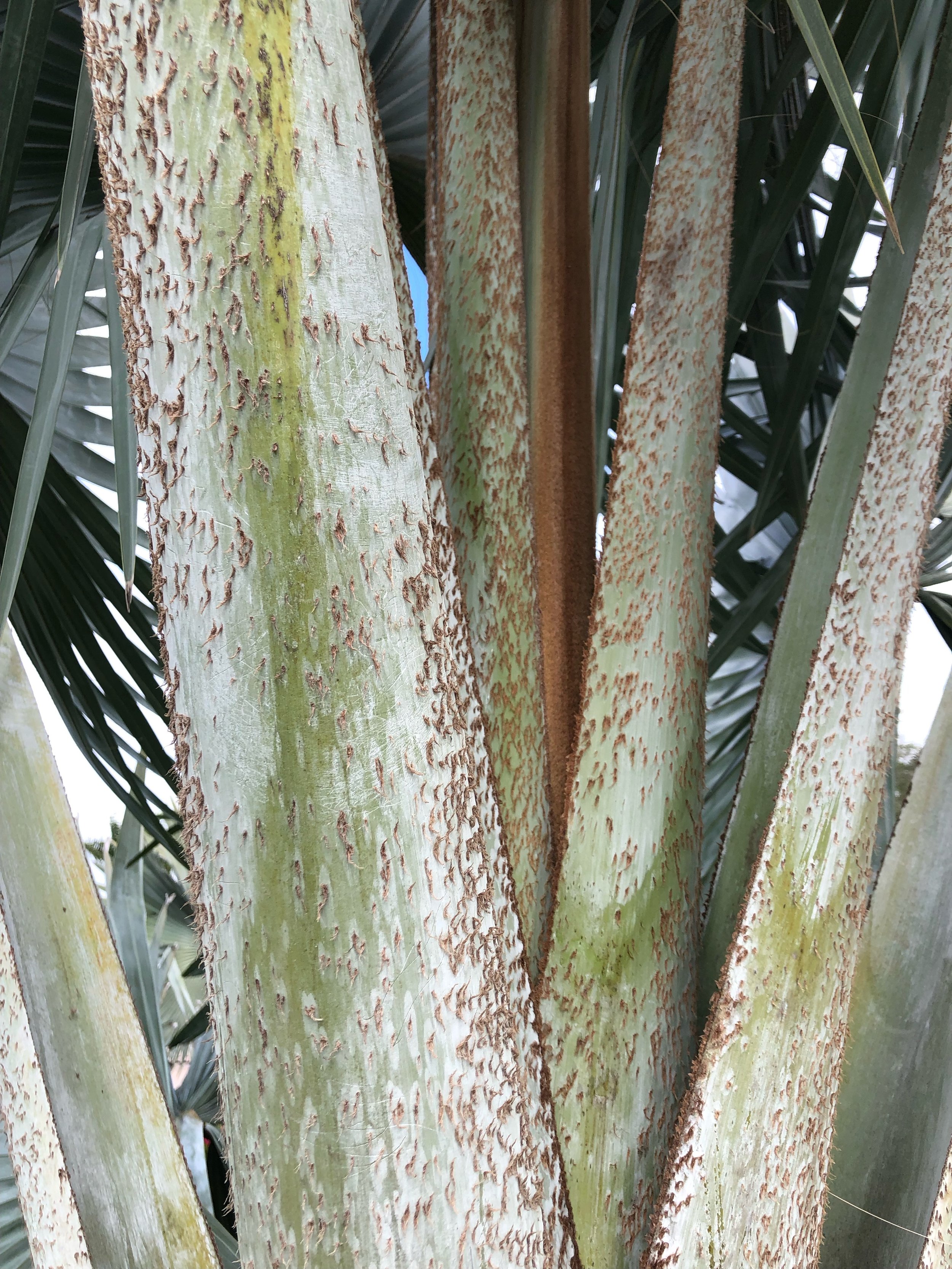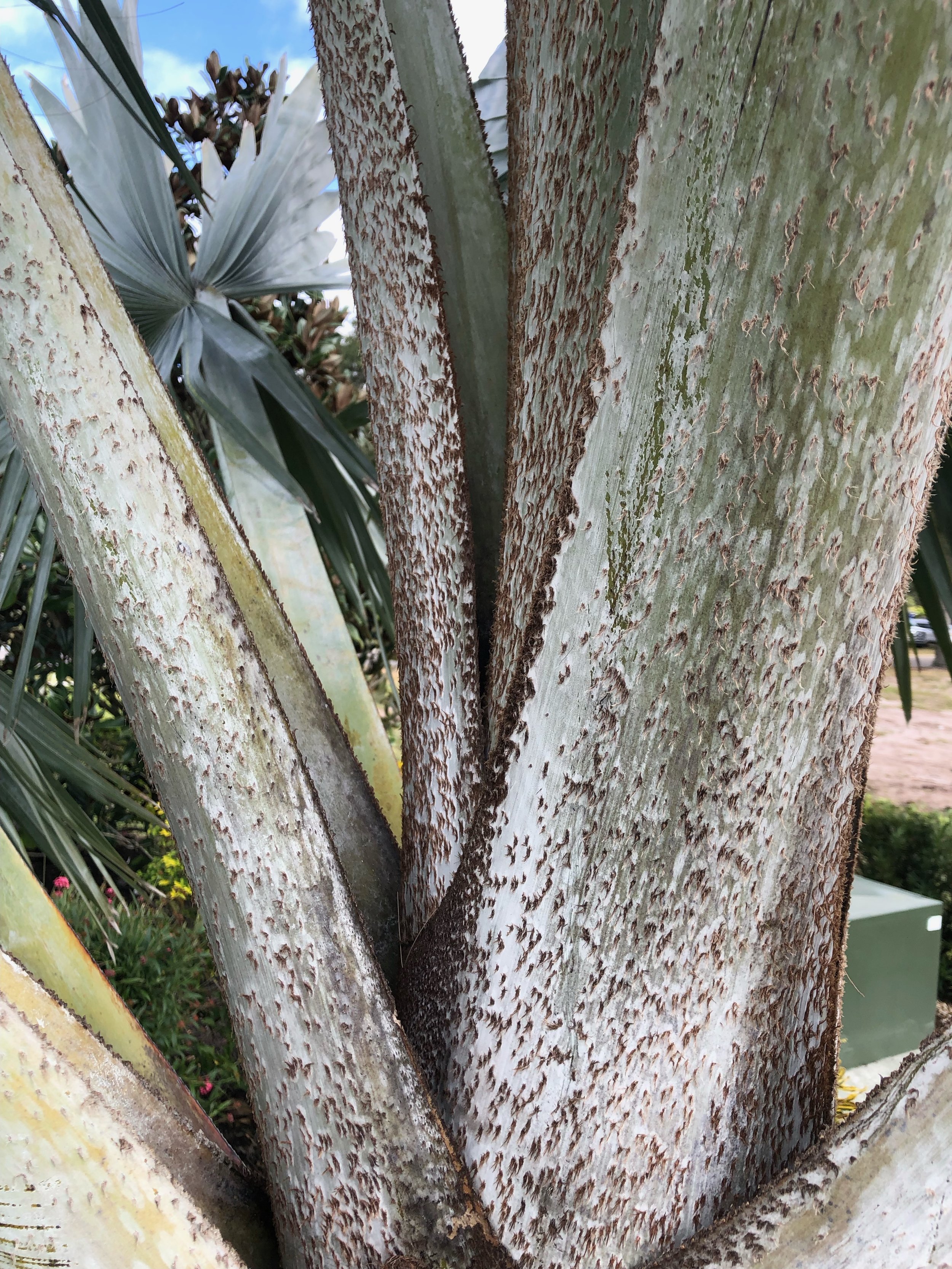General Palm Information
Palm Fun Facts:
Despite people often referring to palms as “palm trees,” palms are NOT trees. Because trees are dicots, and palms are monocots, palms have different needs than trees.
The vascular system of a palm is in bundles scattered throughout the trunk.
Palm roots spread out far from the palm, sometimes more than 100 feet away. However, these roots aren’t very deep like tree roots can be.
The health of the palm bud is very important, it cannot rejuvenate itself, if the bud dies, the whole palm dies.
Palm trunks have a single growth point, called the apical meristem.
Most palms found in the landscape in Florida are not native to Florida. Therefore, our soils are not adequate for their nutritional needs. This is why fertilizing palms is important.
Parts of a Palm:
Common Palm Identification:
Below is a selection of palms commonly found in the Suncoast landscape. A majority of these palms are not native to the Florida landscape. Therefore, their places of origins have been noted. Additionally, common nutritional issues and pest issues that arise in each species of palm have been listed. These are not a comprehensive list of all of the nutritional and pest issues that may occur, rather they are what we see most commonly in the our area (Sarasota, Manatee, and Hillsborough Counties).
Queen Palm
Syagrus romanzoffiana
Place of Origin: South America
Common Nutritional Issues: Manganese, Boron, Potassium
Common Pest Issues: Fusarium Wilt
Christmas Palm
Adonidia merrillii
Place of Origin: The Philippines
Common Nutritional Issues: Potassium
Wild Date Palm
Phoenix sylvestris
Place of Origin: India and parts of Southeastern Asia
Common Nutritional Issues: Potassium
Common Pest Issues: Lethal Bronzing Disease
Pygmy Date Palm .
Phoenix roebelenii
Place of Origin: Southeastern Asia
Common Nutritional Issues: Manganese, Potassium, Boron, Magnesium
Common Pest Issues: Red Date Scale, Sri Lankan Weevils
.
Cabbage Palm / Sabal Palm
Sabal palmetto
Place of Origin: The Southeastern United States and the Caribbean
Common Nutritional Issues: Potassium
Common Pest Issues: Lethal Bronzing Disease, Palmetto Weevils
Note: Cabbage palms have low nutritional needs.
Areca Palm
Dypsis lutescens
Place of Origin: Madagascar
Common Nutritional Issues: Potassium, Manganese
Common Pest Issues: Mealy Bugs
.
.
.
Coconut Palm
Cocos nucifera
Place of Origin: Southeastern Asia
Common Nutritional Issues: ?
Note: Falling fruit can be hazardous.
.
.
Chinese Fan Palm
Livistona chinesis
Place of Origin: East Asia
Note: Have better color when they grow in partial shade.
.
.
Spindle Palm
Hyophorbe verschaffeltii
Place of Origin: Mauritius
Common Nutritional Issues: Potassium, Magnesium
Royal Palm
Roystonea regia
Place of Origin: Central America, the Caribbean, and Southern Florida
Common Nutritional Issues: Manganese, Potassium
Common Pest Issues: Royal Palm Bug
Foxtail Palm
Wodyetia bifurcata
Place of Origin: Australia
Common Nutritional Issues: Potassium, Manganese, Boron
Common Pest Issues: Mealy Bugs
Note: Foxtail palms have a high nutrient requirement.
Date Palm
Phoenix dactylifera
Place of Origin: The Middle East
Common Nutritional Issues: Potassium
Common Pest Issues: Lethal Bronzing Disease
Pineapple / Canary Island Date Palm
Phoenix canariensis
Place of Origin: Canary Islands
Common Nutritional Issues: Potassium, Magnesium, Boron
Common Pest Issues: Palmetto Weevils, Lethal Bronzing Disease, Fusarium Wilt, Graphiola, and Palm Leaf Skeletonizers
Washingtonia / Mexican Fan Palm
Washingtonia robusta
Place of Origin: Northwestern Mexico
Common Nutritional Issues: Boron, Potassium
Common Pest Issues: Palmetto Weevils, Fusarium Wilt
Note: Washingtonias grow very rapidly and can grow to be very tall.
Fishtail Palm
Caryota spp.
Place of Origin: Asia and the South Pacific
Common Nutritional Issues: Potassium
Note: Fishtail palms die after they finish fruiting. If the palm has a single
trunk the entire palm will die. If the palm has multiple trunks the fruiting
trunks will die.
Bismarck Palm
Bismarckia nobilis
Place to Origin: Madagascar
Common Nutritional Issues: Potassium, Magnesium (occasionally)
Common Pest Issues: Palmetto Weevils
Note: Bismarck palms don’t transplant as well as other palms.
Pindo Palm
Butia capitata
Place of Origin: Brazil
Common Nutritional Issues: Potassium, Iron, Manganese
Common Pest Issues: Can get Lethal Bronzing Disease
.
Bottle Palm
Hyophorbe lagenicaulis
Place of Origin: Mauritius
Common Nutritional Issues: Potassium, Magnesium, Manganese
Plants Commonly Mistaken As Palms:
While some of these plants are colloquially referred to as “palms,” they do not belong in the palm family, and therefore are not actually palms. Nevertheless, they can still benefit from receiving fertilization.
Ponytail “Palm”
Beaucarnea recurvata
Traveller’s “Palm”
Ravenala madagascariensis
King Sago “Palm”
Cycas revoluta
Dracaena
Dracaena spp.
What Is On My Palm?:
We often get questions asking us about strange features on certain palms. The following are harmless things that may be on your palm.















































